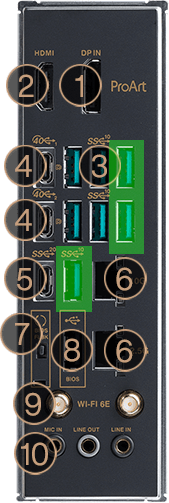I decided to test if I could run Linux as the host OS and Windows as a guest on this machine I have, tested things out first on a spare machine to see the ideas I had were overall viable, and then proceeded to test on this specific hardware.
First, the goal was just to get Windows in a VM with my 4090 passed through to it, leaving the iGPU to the host system for Linux desktop use. This part was pretty easily accomplished. Secondly, I needed some USB for VR etc. on the VM, so I had bought a USB controller PCIe card. When testing it on the other hardware it worked flawlessly, but on this one it ends up in a massive IOMMU group with a dozen other devices that I simply cannot pass through.
I however identified a number of USB controllers that are in their own simple IOMMU groups, identified the ports they are hooked to on the back and front panels, and decided it seems like a viable alternative. I tried to pass them through to a VM and the moment I hit start, the entire system locked up with a black screen.
Multiple reboots - system does not post.
When I clear the CMOS it posts, but as soon as I apply basic BIOS settings again (EXPO, IOMMU, SR-IOV, maybe one or two other such basic things) there’s no display out on the iGPU. Multiple attempts to do all kinds of things to it haven’t resolved this issue.
It seems now that if I have a display plugged into the iGPU there will be no POST of any kind, I’ve got display outs connected to the HDMI out on the iGPU, the HDMI out on the 4090, and DisplayPort on the 4090, none of them get any output if the iGPU is connected except for a fully cleared CMOS state.
I’ve tried to the iGPU to “force” in BIOS, I’ve tried to take out all the power from the system, pull the battery, hold the CMOS reset and power buttons for a while, leave it sitting on its own for ~15min or so, and I’m pretty low on ideas of what can I even try.
If I just leave the displays connected to the 4090, it works fine, but this is not a viable configuration for Linux so I’m stuck with using a Windows install for now.
Any clues what happened to the iGPU, and how I can reset it or something?
My remaining ideas are pretty limited, I’ll try to re-flash the BIOS on the board, and hope that resets something, and if it doesn’t I’ll try to clear CMOS, and reboot without changing any BIOS settings, and then apply one setting change per reboot until it fails to figure out what is the root cause of the issue.
All the semi-relevant details:
- CPU: 7950X3D
- Mobo: ASUS ProArt X670E
- GPU: Gigabyte 4090 Gaming OC
- Linux: Elementary OS - based on Ubuntu 22.04, with ZFSBootMenu, root on encrypted ZFS
- 3 NVMe SSDs installed
- USB card is sold by a random brand but hardware is
ASMedia Technology Inc. ASM2142 USB 3.1 Host Controller [1b21:2142]

